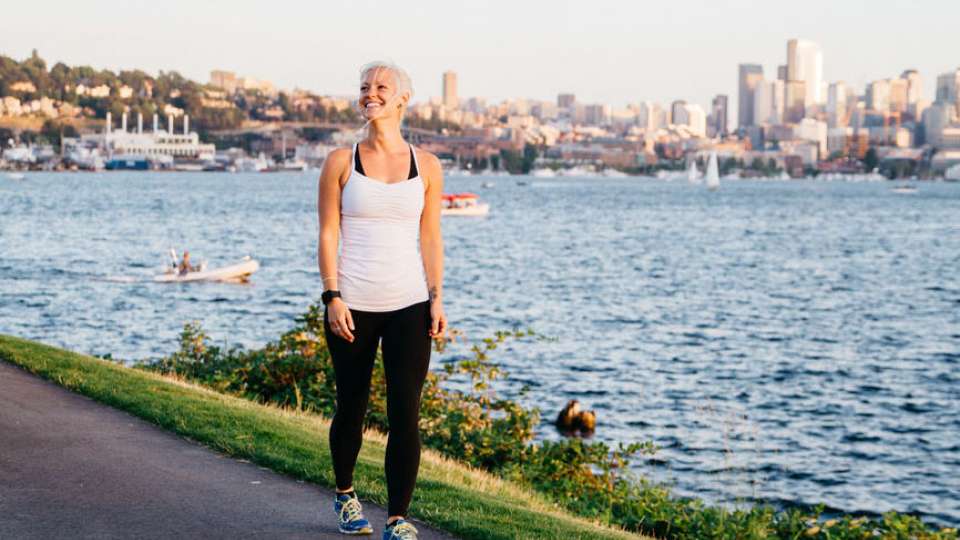
So you got a sunburn. Not because you were trying for a #tantoo or your own inimitable #sunburnart—we hope—but because you goofed. It happens.
Problem is, now you are wearing a crinkly paper suit of pain. One that’s crimson. And peeling.
You may feel—and look—this way for a few days or even longer.
“How long it takes to recover really depends on the severity of the burn,” says Eliza Notaro, M.D., a dermatology resident at the University of Washington School of Medicine.
While you’re waiting for the crinkly suit to slough off, try these sunburn remedies to relieve your suffering.
Get out of the sun and into the tub
“While you can’t reverse the damage from sunburn, getting out of the sun and taking a cool bath can bring relief and discourage inflammation at the same time,” says Notaro.
This is not the moment to try out your Dead Sea bath salts or any other additives that might irritate your skin. “Don’t add anything to your bathwater and keep it on the cool side,” says Notaro. That’s because increasing your internal temperature can bring additional inflammation to already-inflamed skin.
If you don’t have a tub, a cold shower will also help. But skip the pulsing power massage setting on your showerhead for now.
Pamper your skin
After a sunburn, layers of skin that have been damaged will peel off. Be sure to stop any beauty routines, such as exfoliating, that might aggravate skin that’s already angry.
Hold off on using skin care products that contain tretinoin, salicylic acid or benzoyl peroxide until skin is no longer tender. And moisturize, moisturize, moisturize.
“Moisturizing your skin with a non-irritating product such as a hypoallergenic cream will help act as a barrier while those skin layers replace themselves,” says Notaro.
Aloe vera gel applied to the skin may also speed healing.
Relieve the distress
For some it’s pins and needles, for others just plain stinging, and for others, an itch that can’t be relieved. No matter how you experience sunburn, you're likely to feel some distress.
An over-the-counter, 1 percent hydrocortisone cream applied directly to your skin can provide topical relief. Apply carefully and wash your hands afterward so as not to get any in your eyes.
Ibuprofen (Advil, Motrin) or acetaminophen (Tylenol) taken according to the instructions on the bottle will relieve the pain that comes from inflammation.
Drink lots of water
No matter what Tom Brady says, drinking water won’t prevent sunburn. But after the fact, you definitely want to stay hydrated. That’s because a sunburn draws fluid to the surface of your skin and away from the rest of your body, which can cause you to become dehydrated, especially when a large area of your skin is burned.
Children dehydrate even more quickly than adults due to their small body mass, so make sure your little ones stay hydrated. High water-volume foods like watermelon or strawberries are an effective way to increase water consumption for children who have had enough of their sippy cups.
Protect sunburned skin as it heals
Remember that your skin is your first line of defense against illness and injury, including bacteria that could infect an open wound. That’s why if you have sunburn blisters—small, white, fluid-filled bumps on sunburned skin—you shouldn’t pop them. Instead, loosely cover sunburn blisters with gauze to protect them.
“Ideally, you want the roof of the blister to settle back down onto the skin it is rising from to provide protection,” says Notaro.
As your skin heals, limit your time outdoors, especially during peak sunshine hours in the middle of the day. When you do go outside, wear long pants and a sun shirt or rash guard shirt—one that’s labeled ultraviolet protection factor (UPF) 50. Wear a broad-brimmed hat, and oversized sunglasses, too (or at least not tiny sunglasses à la Kanye West). And of course, use sunscreen on skin that’s not blistered.
“It’s also always a good idea to sun-protect tattoos, as chronic sun damage and especially a severe burn can weather the skin and change the appearance of your tattoo,” says Notaro.
Know when to see a doctor
If sunburn blisters are spreading or draining pus (yellow-green fluid), you should seek medical help. Fever, nausea, vomiting, chills, headache, pain that’s not manageable at home and any confusion, disorientation, loss of alertness or other change in mental status also merit a visit to your doctor, says Notaro.
Babies less than a year old who get a sunburn need to see the doctor. Since sunscreen is not recommended for babies less than 6 months of age, newborns should be kept out of the sun altogether. And children with a severe sunburn, blisters or symptoms of heat stress should see a doctor, too.
Protect your new skin
New skin will eventually replace the crinkly stuff. The pain and itching will end. Phew.
“You’ll want to nurture the new skin that comes in like it’s a newborn baby—it’s that sensitive,” says Notaro. “Moisturize often and use sunscreen liberally. Because the best way to treat your sunburn is to prevent it in the first place.”

 Healthy ideas for your inbox
Healthy ideas for your inbox





